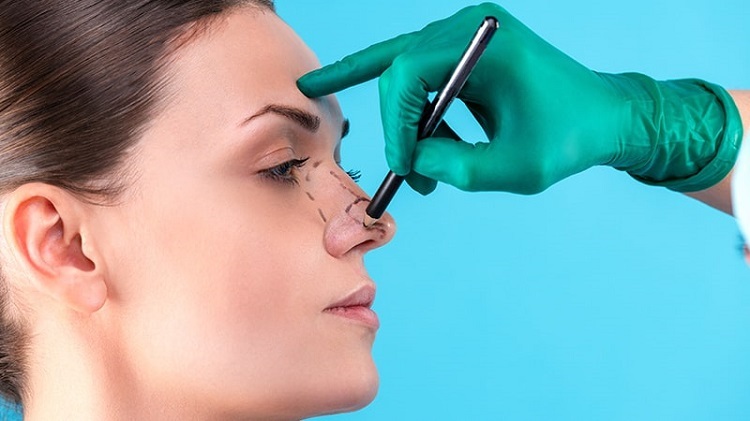Rhinoplasty Operation: Everything you want to know about
Everything About Rhinoplasty Operation, Rhinoplasty gives a new shape to the nose and corrects the septum curvature. The surgeon will work with the cartilage
Everything About Rhinoplasty Operation, Rhinoplasty gives a new shape to the nose and corrects the septum curvature. The surgeon will work with the cartilage and soft tissues of the nose. It can be a life-changing procedure that doesn’t take long to heal.
If you’re still unsure of the process or how you feel about the final results, keep reading. Learn everything you need to know about rhinoplasty to make an informed decision about your health.
Table of Contents
Why would You need to Have Rhinoplasty?
Many people do this for purely valid aesthetic reasons, and it can have a positive impact on their mental health. A person who corrects a slight curvature of the nose can have better self-confidence with a new nose. People who have had rhinoplasty for aesthetic reasons report an improvement in their social life as well.
Some people also undergo rhinoplasty for their physical health. If you received a blow to your nose as a child and are walking around with a crooked septum, it may be affecting your breathing. The breathing problem may not be noticed until old age. One of the purposes of rhinoplasty is to straighten the nose and facilitate airflow.
Problems that rhinoplasty can fix
While we’ve already mentioned a few issues that rhinoplasty can fix, let’s take a look at the various issues that rhinoplasty can fix.
- Very wide or upturned nostrils
- Excess bone cartilage tissue on the back of the nose
- Middle septal cartilage that has slipped due to injuries, closing the passage
- Chronic rhinosinusitis and difficulty breathing
- Birth defects (children born with a cleft palate often have this surgery)
- Nasal polyps blocking the airways
- Low self-esteem in childhood
Everything About Rhinoplasty Operation: Rhinoplasty Surgery Procedure
Consultation Time
Let’s take a look at what processes you will go through if you decide to have a rhinoplasty.
Your rhinoplasty journey begins with talking to your doctor. When you enter your appointment, your doctor will ask you what your goal is. What do you hope to achieve with rhinoplasty? Would you like to have surgery for aesthetic reasons, physical health reasons, or both?
Doctors will need references to plan for your new nose. They will also look inside your nose for any abnormalities and discuss with you all the risks of the surgery.
Preparation For Surgery
Before your rhinoplasty surgery, your doctor will probably not want you to smoke, drink alcohol and use blood thinners a few days before the surgery. If you are taking blood thinners, he will recommend that you stop beforehand. (There may be some unstoppable situations, in these cases intravenous therapy can be added with cardiology consultation)
A week before surgery, start tidying the home for a comfortable recovery. Create a space where you can comfortably spend most of your time for up to a week. Follow your surgeon’s instructions carefully in the days leading up to the procedure. You will probably need to fast for 8 hours to prepare for anesthesia.
Rhinoplasty Surgery Day
Rhinoplasty surgery is usually performed in a time ranging from 2 hours to 3 hours. However, this is the operating time of the surgeon. If the preparations made in the operating room before the surgery, cleaning and covering the patient’s face with antibacterial solutions, and the postoperative awakening process are included, the total time may take around 4 hours.
After the operation, the patient will be hospitalized for one day, so it is recommended to bring comfortable clothes such as slippers, sweatpants, and other things you will need for a day. It is not necessary to stay in the hospital; 6 hours after the operation, the patient can be sent home if there is no problem in eating, drinking water, urine output and vital functions such as blood pressure and pulse are normal. The companion can accompany the patient, but this is not necessary. After this surgery, patients can usually meet their own needs. The procedure is done under general anesthesia.
To reshape and reconstruct the nose, the surgeon will access the nasal tissues by making a small incision between the nostrils. The procedure is mainly done through the nose. If you have polyps that interfere with breathing, the surgeon will carefully cut them out.
For some reason, your surgeon may remove cartilage from another part of your body, such as your ear or rib, to reconstruct your nose. This is more common in revision nose surgery.
Once your surgeon has finished the reconstruction, he will carefully replace your skin and tissues. After sewing the first incision between your nostrils, the process will be complete.
Healing Process
When your rhinoplasty procedure is finished, the medical staff will take you to a room when you wake up. It will take 1-2 hours for the effect of narcosis to pass, and you will get rid of its full effect in 4 hours.
Your surgeon will give you post-operative instructions to help you recover. He or she will ask you to sleep with the head elevated for a few days to reduce swelling and improve drainage and will recommend applying ice to the nose and cheeks on the first and second days. This first day is usually 15 minutes per hour until you fall asleep 15 minutes on the second day, 2 hours Don’t be alarmed if some blood or reddish mucus runs from your nose for the first few days. Change your dressings, especially the drip pad under your nose, as directed.
For the first few weeks after surgery, avoid strenuous activity or exercise. To keep your dressings dry, wash only your neck down area and do not touch your face with water. Do not blow your nose for a while and eat foods high in fiber to prevent constipation.

